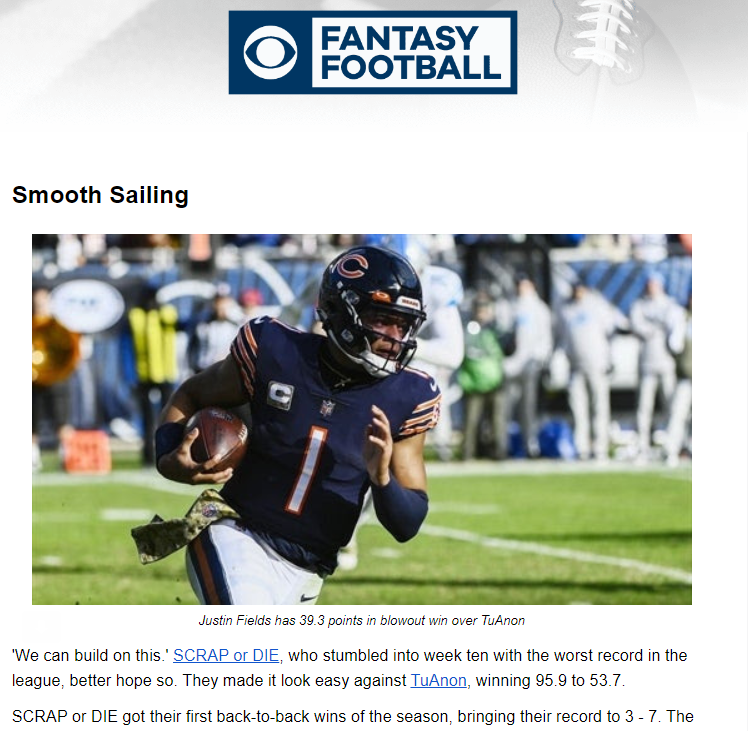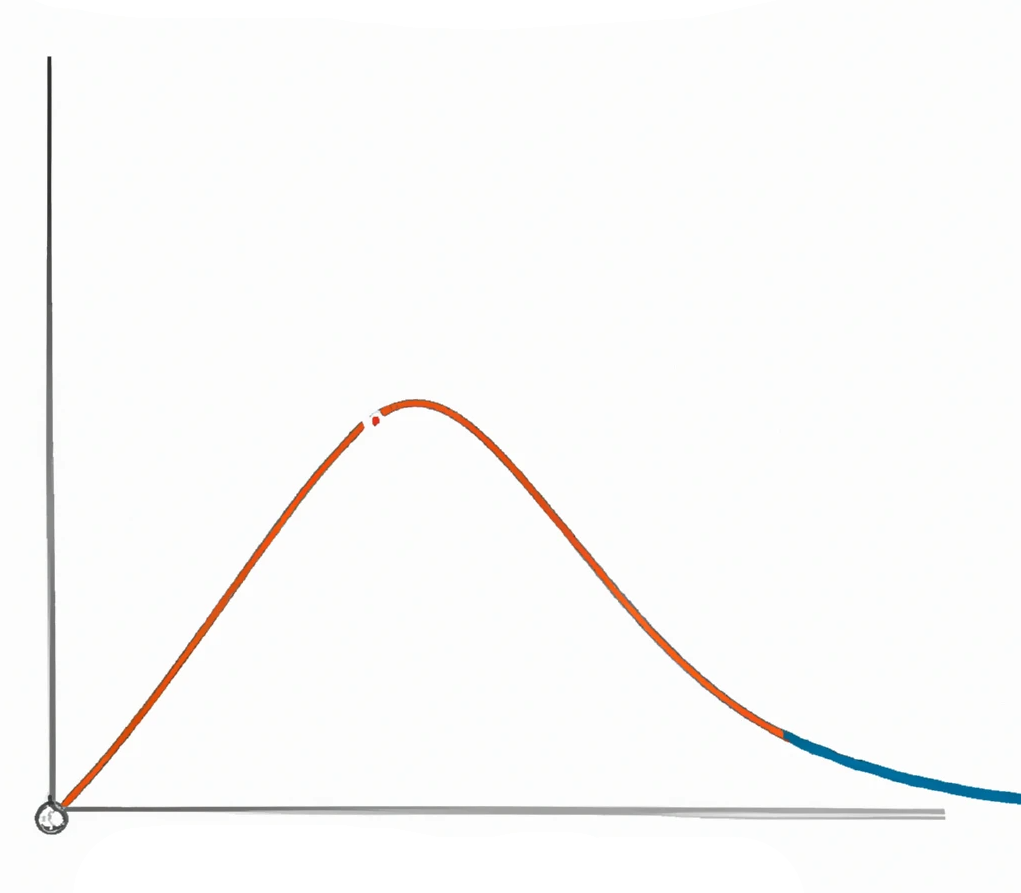
In the olden days, if you wanted to send out a report to your employees, or an update to your clients, or a letter intended for prospective customers, you only had two options:
Option #1: Mass Communication
You create one piece of content and send this off to everybody. If it was a report, then everybody got the same report. If it was a letter to your clients, then every client got the same letter. This has the benefit of being cheap and fast, allowing you to reach as many people as possible. The drawback is that everybody gets the same content regardless of their particular circumstances.
Option #2: Custom Communications
Every client, potential customer, or employee gets content that is specifically written for them. This has the advantage of making the communication maximally effective for each end user. The cost of course, being that it takes time and money to create each communication. In many cases, it’s not feasible to send out a given number of narratives even with an outsized budget.
But what if you didn’t have to choose the least bad option? That is what’s possible with Mass Custom Communication (MCC), which takes the best parts of each option, allowing you to deliver insightful, impactful reports on a near infinite scale. But before we talk more about what MCC is, let’s talk about what it isn’t. MCC is not a form letter and it is not a ‘Mad Libs’ style narrative. We’ve all been the recipient of communications like that, and they barely register as being customized at all, let alone making us feel like they have been written just for us. This goes double if the narrative or report is part of an ongoing series of communications which all use the same template.
In order to create true MCC, you need two things: (1) a rich data set, and (2) Natural Language Generation (NLG) software that can truly synthesize that data set and turn it into a high-quality narrative. Let’s take these in order. First, you need a rich data set because you must have enough unique pieces of data, or combinations within that data, to write up something different for each end user. In essence, you need ‘too much’ information to fit into a template.
Once you have ‘too much’ information, you need high-quality synthesis from an AI NLG system. This system can go through thousands of data points to find the most relevant information for each end user. It then can automatically organize this information into a narrative with clear main points and interesting context, so that the end user is able to read something that feels unique and compelling to them. For example, a salesperson can get a weekly report that not only tells them about the top-line numbers for their sales this week, but also contextualizes those numbers with trends from their sales history and larger trends within the company.

Individual Outreach
A great example of the power of MCC comes from the world of fantasy sports. For those of you unfamiliar with how fantasy sports work, you and your friends each draft players within a given sport, and then your ‘team’ competes with other teams in the league. It’s sort of like picking a portfolio of stocks and seeing who can do the best.
People love playing fantasy sports, but because each team is unique, and because there are millions of fantasy players, people were never able to get stories about their fantasy league the same way that they get stories about the professional leagues. With the advent of MCC, suddenly they could, and CBS Sports decided to take advantage of it.
For the last 10 years, we’ve written up stories about what happened for every CBS fantasy team every week, creating game recaps, game previews, draft reports, power rankings, and many other content pieces, each with headlines, pictures, and other visual elements. This was actually infoSentience’s first product, so it is near and dear to my heart. We’ve now created over 200 million unique articles which give CBS players what we call a ‘front page’ experience, which covers their league using the same types of content (narratives, headlines, pictures) as the front page of a newspaper. Previously, they could only get a ‘back page’ experience that showed them columns of stats (yes, I realize I’m dating myself with this reference).

Critically, quality is key when it comes to making these stories work. Cookie-cutter templates are going to get real stale, real fast when readers see the same things over and over again each week. Personalization involves more than just filling in names and saying who won, it’s about finding the unique combinations of data and events that speaks to what made the game interesting. It’s writing about how you made a great move coaching AND how that made the difference in your game AND how that means you are now the top-rated coach in your league.
This type of insight is what makes for compelling reading. Open rates for the CBS weekly recap emails we send out are the highest of any emails CBS sends to their users. If you are sending out weekly reports to each of your department managers, or monthly updates for each of your clients, they have to be interesting or they’re not going to be read. If each report is surfacing the most critical information in a fresh, non-repetitive manner, then end users will feel compelled to read them.

Long Tail Reporting
Reports don’t necessarily have to be targeted at individuals in order to achieve scale. You might also just need to write a lot of reports using many subsets of your data. These reports might be targeted towards groups, or just posted onto a website for anybody to read. This might be better labeled Mass ‘Niche’ Communications, but it definitely falls under the MCC umbrella.
CBS has not only taken advantage of MCC for their fantasy product, but has also applied it to live sports. They leverage our automated reporting technology to supplement their newsroom by writing stories they otherwise wouldn’t have time for. Being one of the major sports sites in the US, they obviously have plenty of quality journalists. That still doesn’t mean that they are capable of covering every single NFL, NBA, college basketball, college football, and European soccer match, let alone writing up multiple articles for each game, covering different angles such as recapping the action, previewing the game, and covering the gambling lines.
That’s where our technology comes in. We provide a near limitless amount of sports coverage for CBS Sports at high quality. That last part is once again key. CBS Sports is not some fly-by-night website looking to capitalize on SEO terms by throwing up ‘Mad-Libs’ style, cookie-cutter articles. These write-ups need to have all the variety, insight, and depth that a human-written article would have, and that’s what we’ve delivered. For example, take a look at this college football game preview. If you just stumbled across that article you would have no idea it was written by a computer, and that’s the point.
Our work for IU Health is another example of this type of reporting. We automatically write and update bios for every doctor in their network, using information such as their education history, specializations, locations, languages, and many other attributes. We even synthesize and highlight positive patient reviews. Like with CBS, these bios would be too difficult to write up manually. There are thousands of doctors within IU’s network, and dozens come and go every month. By automating the bios, IU not only saved themselves a great deal of writing, but also made sure that all their bios are up to date with the latest information, such as accurate locations and patient ratings.
Your Turn?
If you are in a situation where you are either (A) not creating all the content you need because you don’t have the workforce, or (B) using generic reports/communications when you would really benefit from having a custom message, then hopefully this article opened your eyes to a new possibility. Mass Custom Communication allows you to have your cake and eat it too. Maybe your use case can be the one I talk about in the next version of this article.

[Note: All of the following concerns AI’s ability to write about specific data sets, something very different from ChatGPT-style natural language generators]
We all know the basics for why good writing is important in business. Decision makers want to read reports that are accurate, impactful, and easy to understand. With those qualities in mind, let’s take a look at this short paragraph:
Widgets were down this month, falling 2.5%. They were up the last week of the month, rising 4.5%.
Assuming the numbers are correct, the sentences would certainly qualify as being ‘accurate’. The metrics mentioned also seem like they would be ‘impactful’ to a widget maker. Is it ‘easy to understand’? Here’s where it gets a bit trickier. Both sentences by themselves read fine, but when you put them together, there’s something missing. The writing comes across as robotic. Ideally, we’d want the sentences to read more like this:
Widgets were down this month, falling 2.5%. The last week of the month was a bright spot though, as sales rose 4.5%.
This is conveying the exact same basic information as before: (1) monthly sales down, and (2) last week up. But the sentence contains a critical new word: though. Transition words like ‘though’, ‘however’, ‘but’, and so on play a critical role in helping our brains not just download data, but rather tell the story of what is happening in the data. In this case, the story is about how there’s a positive sign in the time series data, which is also emphasized by using the ‘bright spot’ language.
If a manager was just reading the first example paragraph, it’s likely that they would be able to fill in the missing info. After reading the second sentence their brain would take a second and say “oh, that’s a good sign going forward in the midst of overall negative news.” But having to make the reader write the story in their head is not cost free.
After all, it's not enough to just understand a report. Whether it’s an employee, C-suite executive, client, or anybody else, the point of a report is to give someone the information they need to make decisions. Those decisions are going to require plenty of thinking on their own, and ideally that is what you are spending your brainpower on when reading a report.
This brings me to my alternate definition of what ‘good writing’ really means: it’s when you are able to devote your brainpower to the implications of the report rather than spending it on understanding the report.
So what are the things that we need to allow our brain to relax when it comes to understanding data analysis? There are three main factors, which I call “The Three T’s”, and they are:
- Trust – you have to trust that the numbers are accurate of course, but real trust goes beyond that. It’s not just feeling confident about the stories that are on the page, but also feeling confident that there isn’t anything critical that is being left out.
- Themes – the report can’t just be a series of paragraphs, there has to be a ‘through-line’ that connects everything, allowing you to quickly grasp which stories are central and which ones are secondary.
- Transitions – this can be seen as a mini version of the ‘Themes’ factor. Transitions and other emotional language, as shown in our example above, can help keep your thoughts on track as you make your way through each sentence.
All of these things are hard enough for a human data analyst or writer to pull off (am I extra nervous about my writing quality for this post? Yes, yes I am). For most Natural Language Generation (NLG) AI systems, nailing all Three T’s is downright impossible. Each factor presents its own unique challenges, so let’s see why they are so tough.

Trusting AI
The bare minimum for establishing trust is to be accurate, and that’s one thing that computers can do very easily. Better, in fact, than human analysts. The other key to establishing trust is making sure every bit of critical information will make it into the report, and this is where AI’s have traditionally struggled. This is because most NLGs in the past used some sort of template to create their narratives. This template might have a bit of flexibility to it, so a paragraph might look like [1 – sales up/down for month] [2 – compare to last year (better or worse?)] [3 – estimated sales for next month]. Still, templates like that aren’t nearly flexible enough to tell the full story. Sometimes the key piece of information is going to be that there was a certain sub-component (like a department or region) that was driving the decrease. Other times the key context is going to be about how the movement in the subject of the report was mirrored by larger outsize groups (like the market or economic factors). Or, the key context could be about the significance of the movement of a key metric, such as whether it has now trended down for several months, or that it moved up more this month than it has in three years.
There’s no way to create a magic template that will somehow always include the most pertinent information. The way to overcome this problem is to allow the AI system to work the same way a good human analyst does- by first analyzing every possible event within the data and then writing up a report that includes all of those events. But having this big list of disjointed events makes it that much more difficult to execute on the second ‘T’: Themes.
Organizing the Story
How does the AI go from a list of interesting events to a report that has a true narrative through line, with main points followed by interesting context? The only way to do this is by embedding conceptual understanding into the AI NLG system. The system has to be able to understand how multiple stories can come together to create a theme. It has to be able to understand which stories make sense as a main point and which stories are only interesting as context to those main points. It also needs to be able to have the ability to fit those stories into a narrative of a given length, thereby requiring some stories to be told at a high level rather than going into all of the details.
Writing the Story
Just like how the importance of transitions are a small-scale version of themes, the challenges for dealing with transitions are a small-scale version of themes. That doesn’t make them any easier, unfortunately. The issue with themes is structural- how do I organize all the key pieces of information? The problem with transitions comes about after everything has been organized and the AI has to figure out how to write everything up.
Again, the solution is to have an AI system that understands conceptually what it is writing about. If it understands that one sentence is ‘good’ and the next sentence is ‘bad’, then it is on the path to being able to include the transitions needed to make for good writing. Of course, it’s not quite that simple, as there are many conceptual interactions taking place within every sentence. For example, starting out a sentence with “However, …” would read as robotic if happening twice within the span of a few sentences. Therefore, the AI system needs to find a way to take into account all of the conceptual interactions affecting a given sentence and still write it up properly.

Have no Fear!
These are all complex challenges, but thankfully infoSentience has built techniques that can handle The Three T’s with no problems. Whether it’s a sales report, stock report, sports report, or more, infoSentience can write it up at the same quality level as the best human writers. Of course, we can also do it within seconds and at near infinite scale (Bill Murray voice- “so we got that going for us”).
